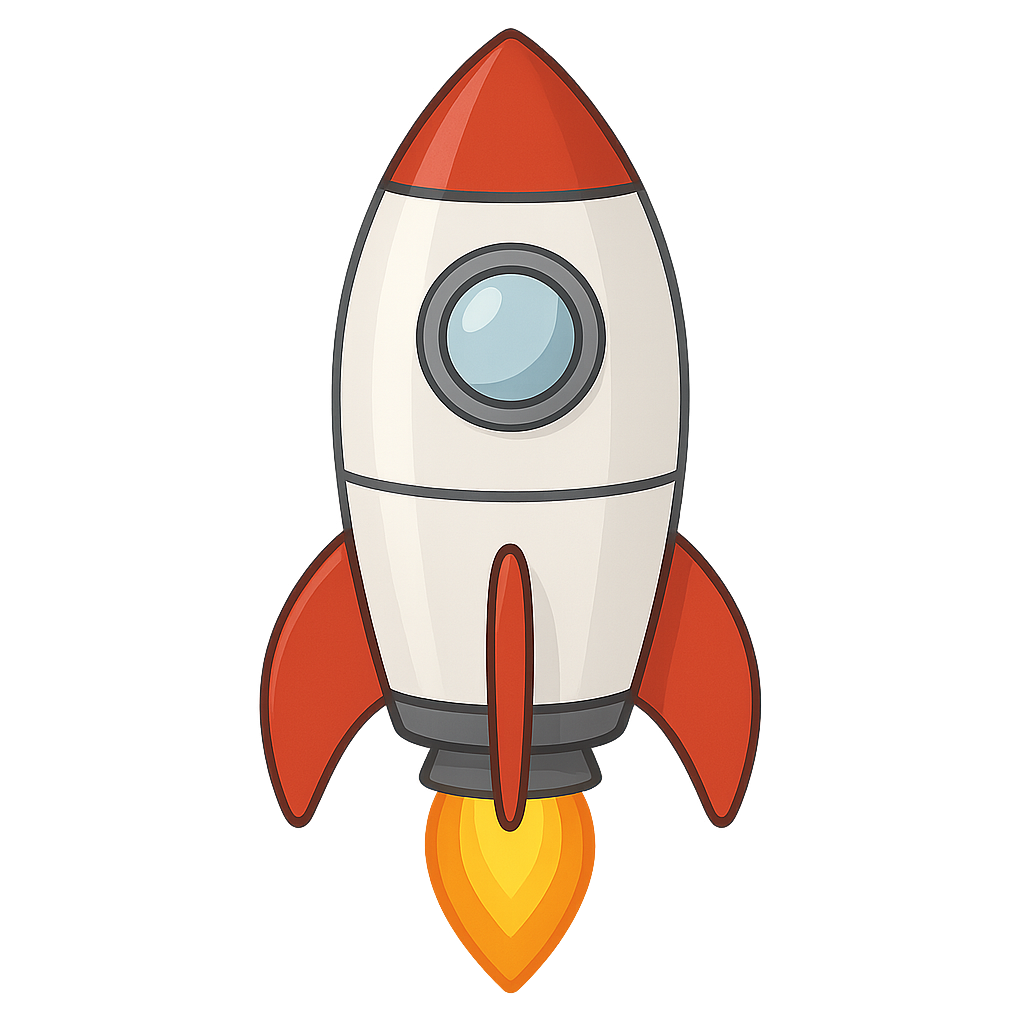A Voice from the Stars
Before I was metal and fire, I was a dream whispered on starry nights. I am a Space Rocket, and my story began long before I ever stood on a launchpad. It started as a spark of curiosity in the human heart, a yearning to touch the sky. For centuries, people looked up at the moon and stars and wondered what they were and how one might visit them. That dream took its first tiny leap in ancient China, where brilliant inventors created fireworks. They discovered that a rush of fire and gas could push a small tube into the air. That explosive push was my earliest ancestor, a fleeting, colorful promise that one day, humanity would not just send lights into the sky, but themselves. I am the fulfillment of that ancient promise, a vessel of exploration built with science, courage, and an unyielding desire to see what lies beyond the blue horizon. I was designed to do the impossible: to break the chains of gravity that hold everything to the Earth and journey into the silent, beautiful emptiness of the cosmos. I am the embodiment of the question, 'What's out there?'.
My physical journey from an idea to a reality was slow and filled with challenges. It required dreamers who could see past the limitations of their time. One of the most important was a man named Robert H. Goddard. In the early 20th century, while others thought space travel was fantasy, he was meticulously calculating how it could be done. He knew that solid-fuel fireworks were too unpredictable. He imagined a rocket he could control, one powered by a careful mix of liquid fuel and oxidizer. On a chilly day, March 16th, 1926, in a field in Massachusetts, a small, strange-looking part of me stood ready. I was not grand or mighty then. I was a spindly frame of pipes and nozzles. When my fuel ignited, I rose with a shriek, soaring for just two and a half seconds. It was a wobbly but triumphant flight, traveling only about as high as a barn, but it was everything. It proved that controlled, liquid-fueled flight was possible. That was my first breath. My power comes from a simple, powerful law of physics: for every action, there is an equal and opposite reaction. I throw a massive amount of hot gas downward with incredible force, and in return, the universe pushes me upward. As the years passed, other brilliant minds, like Wernher von Braun, took these early lessons and helped me grow. Each new version of me was bigger, stronger, and more powerful, learning from the successes and failures of the ones that came before, all in preparation for journeys that Dr. Goddard could only have dreamed of.
My true purpose became clear during a time of intense competition known as the Space Race. On October 4th, 1957, a part of me known as an R-7 Semyorka rocket roared to life and carried a small, polished sphere into the sky. That sphere was Sputnik 1, the first artificial satellite to orbit the Earth. As it circled the globe, sending out a simple, steady beep, it was as if I was announcing a new era to the entire world. Humanity was no longer bound to its planet. That single event ignited a passion for exploration that would lead to my greatest adventure. I grew into my most powerful form: the Saturn V. Standing taller than a 36-story building, I was a machine of unimaginable power, designed for a single, monumental goal. On the morning of July 16th, 1969, I felt the weight of three brave astronauts—Neil Armstrong, Buzz Aldrin, and Michael Collins—and the hopes of the world. The countdown reached zero, and my five F-1 engines ignited. The ground shook for miles as I unleashed over seven and a half million pounds of thrust. It was a moment of both terrifying power and incredible purpose. I pushed them away from the Earth, faster and higher than any human had ever gone, sending them on a precise path across 240,000 miles of empty space. And on July 20th, 1969, I watched from my distant orbit as they fulfilled the ancient dream, taking a small step onto the surface of the Moon, forever changing our place in the universe.
My story did not end on the Moon. In fact, that was just the beginning. Today, my family is more diverse and capable than ever. Some of my descendants are sleek and intelligent, like the Falcon 9 rockets, which can fly to orbit and then return to Earth to land upright, ready to fly again. This reusability has made space more accessible than ever before. I also launch robotic explorers, courageous probes that I send on one-way journeys to the farthest reaches of our solar system. I have sent rovers to crawl across the red dust of Mars, orbiters to peer through the thick clouds of Jupiter, and messengers like the Voyager probes, which are now sailing through interstellar space, carrying greetings from Earth. I also carry humanity's greatest eyes, telescopes like Hubble and the James Webb Space Telescope, placing them in orbit high above the blurry atmosphere. From there, they gaze back to the dawn of time. I am more than just a machine; I am a tool of discovery, a testament to what we can achieve when we work together. My journey is proof that with enough curiosity, perseverance, and courage, no dream is too distant, and no star is out of reach.
Reading Comprehension Questions
Click to see answer
